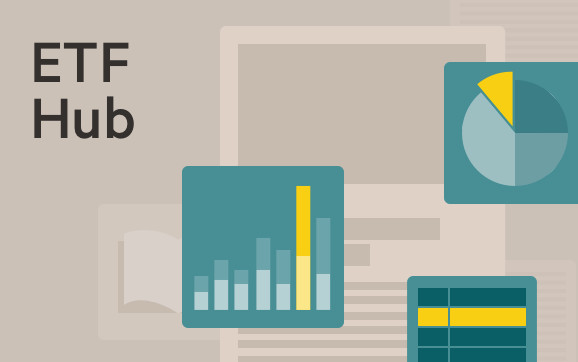Calamos files to launch convertible bond ETF

Simply sign up to the Exchange traded funds myFT Digest -- delivered directly to your inbox.
Latest news on ETFs
Visit our ETF Hub to find out more and to explore our in-depth data and comparison tools
Calamos Investments, one of the pioneers in convertible bond funds, has filed to bring its expertise to exchange traded fund investors nearly 40 years after first mutual fund offering.
The Calamos Convertible High Delta ETF (CVRT) is expected to launch in the third quarter.
“Investor preferences are evolving and the appetite for sophisticated solutions in ETF form is growing rapidly,” said John Calamos, chair and global chief investment officer.
Convertible bonds — debt securities that can be converted into a pre-determined number of equities — are currently little covered by the ETF industry.
There are $235bn of convertible bonds outstanding in the US and $364bn globally, according to data from Bank of America — but only seven US-listed ETFs, with combined assets of $4.8bn, according to VettaFi, a consultancy.
The bulk of these assets are held by the SPDR Bloomberg Convertible Securities ETF (CWB) and iShares Convertible Bond ETF (ICVT), both of which are passive, whereas Calamos’s ETF, in line with its mutual funds, will be actively managed.
The largest active ETF, the First Trust SSI Strategic Convertible Securities ETF (FCVT) holds just $104mn.
The filing is the second step of a plan by the $35bn Illinois-based house to build a roster of ETFs, both in the US and potentially in Europe as well.
Calamos launched its first ETF, the Calamos Antetokounmpo Global Sustainable Equities ETF (SROI), in February, in conjunction with basketball player Giannis Antetokounmpo.
It is best known, though, for its expertise in liquid alternatives, which account for $16bn of its assets, including $11bn of convertible bonds.
Convertibles are “the core of our brand. It’s a space that we really want to own,” said Matt Kaufman, head of ETFs, who joined Calamos in January to pilot its expansion into the fund structure.
The “High Delta” part of the ETF’s name refers to Calamos’s intention to invest in convertibles whose market price exhibits more sensitivity to the underlying equity, rather than the fixed-income element.
Despite the paucity of convertible bond ETFs, Kaufman suggested the growth of options-based ETFs indicated that advisers might be ready to look at convertible bond ETFs. “They have a pay-off structure: what’s my opportunity for upside? What’s my potential downside? It gives people a fresh way of looking at the market.”
Last year’s sharp losses are unlikely to have helped. The Bloomberg US Convertible Cash Pay Bond index fell 20.5 per cent in 2022, mirroring painful losses for both equities and bonds, although the five-year annual average return is still a respectable 10.1 per cent.
New issuance also plunged last year, to $29bn in the US and $40bn globally, compared to $84bn and $148bn, respectively, in 2021, according to BofA.
“As rates have risen, there definitely has been a drop-off in convertible issuance,” Kaufman conceded. However, he said Calamos was “fine” with the number of bonds that are available, given “massive issuance” in 2020 and 2021 and typical lifespans of up to a decade.
Moreover, “if the market dries up significantly, which we don’t anticipate it will”, Calamos can always build synthetic convertibles out of Treasury bonds and call options on favoured stocks, he added.
Although Calamos has no other active filings at present, more launches are planned.
Kaufman was recruited from Milliman Financial Risk Management, sub-adviser to Innovator Capital Management, the world’s largest provider of “defined outcome” buffered ETFs, where he specialised in building products that utilised futures and options contracts.
This is an indication of where else Calamos wants to go with its ETF rollout, constructing options strategies and risk management capabilities in house, “which I think is different from a lot of ETF houses that outsource a lot of what they do”, Kaufman said.
In its mutual fund range, Calamos runs hedge fund-like market neutral, long/short equity and hedged equity funds, alongside simpler equity and fixed-income vehicles and its convertibles strategies.
Some of these relatively complex strategies are likely to find their way into its ETFs.
“The advisory community are ready for options,” said Kaufman.
“We think in terms of categories rather than specific products. What problems are advisers facing? What is happening in other areas of finance? We are looking at these types of revolutionary ideas from a marketing and brand perspective that allows us to create new categories, name them and own them. There is a massive retirement income crisis in America that is ripe to be solved.”
Latest news on ETFs

Visit the ETF Hub to find out more and to explore our in-depth data and comparison tools helping you to understand everything from performance to ESG ratings
“We are looking across the board at our core competences. Calamos is extremely committed to the ETF space, we know it’s a space that we need to be in.”
If it can get to “5-20 ETFs within the next few years., that would be a great business for us,” Kaufman said.
Its ambitions are not limited to the US, with Europe also in its sights, even if “European ETF adoption seems to be 3-5 years behind what is happening in the US”.
“We have a Ucits platform that we have selling through for a few years. That’s certainly on the radar as well. The ETF market in Europe is different but it’s growing. It’s not something that we are overlooking,” Kaufman added.
Comments